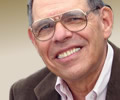German opera after Mozart became increasingly self conscious. Strauss’s Ariadne Auf Naxos is an example of this solipsistic trait. It was originally intended to be a half hour divertissement to follow Hugo von Hofmannsthal’s adaption of Molière’s Le Bourgeois gentilhomme. Strauss also wrote incidental music for the play. The 30 minute opera grew to 90 and the whole evening’s performance lasted more than six hours. Unsurprisingly, the show was not a success. This first effort was in 1912. Four years later, Hofmannsthal persuaded Strauss that the play should be replaced by a prologue which explained why the commedia dell’arte characters were wandering around Naxos during The Opera. This version premiered in Vienna in October of 1916 and is the one almost always performed today.
The Prologue contains a lot of dialogue. There’s even a character who speaks rather than sings – The Major-domo. TV host Matthew Polanzani called the prologue ‘chatty’. It’s so conversational that the Prologue was done in English when Ariadne first appeared at the Met in 1962. The composer of The Opera is conned into letting Zerbinetta’s troupe of comic players perform simultaneously with those of his serious opera. All this hustle and bustle is skillfully scored by Strauss. There are serious discussions of art and music, but except for a short stretch of the composer’s monologue and interaction with Zerbinetta there’s nothing that touches the emotions which is opera’s raison d’etre. The second half of the work contains the best known arias. But emotional depth doesn’t arrive until the duet between Ariadne and Bacchus that ends the opera.
The current production dates to 1993 when it was staged by Elijah Moshinsky. The Prologue is set in the bowels of the estate of the richest man in Vienna and is a whirlpool of activity. Herr Rich Guy keeps changing the program of the evening’s events which is what drives the story. Isabel Leonard as the composer looked, acted, and sang the part with skill and sincerity. She got everything possible from her role. Veteran baritone Wolfgang Brendel returned as the non-singing Major-domo after an absence of 15 years. He was expertly officious. There’s enough happening in the first part to keep you awake, but if you’re waiting for some of the lyricism, either from the voices or from the orchestra, for which Strauss was renowned you’ll be disappointed.
The Opera is set on a stylized Naxos. The three nymphs were each on a very high platform that was wheeled around as the action proceded. Their positions looked precarious, but they (Deanna Breiwick, Tamara Mumford, and Maureen McKay) seemed secure and sang with ease.
Ariadne was sung by the Norwegian soprano Lise Davidsen. Though she has been singing some heavy roles, she has a lyric soprano voice. Ariadne pushed her near the limit of her sound. She gave a convincing reading of ‘Es gibt ein Reich’. She was clearly the live audience’s favorite. This role was her third at the Met. She previously has sung Lisa in The Queen of Spades and Eva in Die Meistersinger. Both roles are less demanding than today’s. She’s gotten rave reviews for this performance, so maybe I was expecting too much.
High soprano Brenda Rae delivered ‘Grossmächtige Prinzessin’ with superlative singing. The piece is as difficult a coloratura aria as can be found anywhere in opera. Her alpine notes were spot on regardless of whether her feet were on the ground or not. Her bravura performance was the highlight of the afternoon.
Strauss didn’t like the tenor range and his writing for tenor shows this displeasure. The tenor only has a few words in the Prologue. In the Opera he appears at the conclusion as Bacchus. The young god’s music is set in the most difficult part of the tenor range. It’s a killer. Brandon Jovanovich got through without misadventure, though it was a close run thing. He sounded hoarse during his offstage singing before his entrance. But the phlegm must have cleared as the hoarseness did not recur.
All of the numerous secondary parts were performed to the highest standard. Laurie Feldman directed this iteration of the production with insight. Just keeping the performers from running over each other in the Prologue is a directorial feat.
Conductor Marek Janowski returned to the Met after a 33 year interval. He led a refined reading of a score delicately written for an orchestra small by Straussian standards. The players were, as is now typical, up to anything they were asked to do.
Video director Gary Halvorson relapsed to extreme closeups. They were so near that you could estimate with a good degree of accuracy how much money each of the singers had spent on the cosmetic dentistry. Some of the dental work appeared to reach six figures.
Strauss was as skillful as possible in the construction of an opera. What he lacked in this opera was a story that allowed poetry, at least until its conclusion. Having a literary giant as your librettist can have drawbacks. Still Strauss even off his peak is worth an occasional hearing.
Metropolitan Opera House
March 12, 2022
ARIADNE AUF NAXOS
Richard Strauss-Hugo von Hofmannsthal
Ariadne/Prima Donna…..Lise Davidsen
Bacchus/Tenor………..Brandon Jovanovich
Zerbinetta…………..Brenda Rae
The Composer…………Isabel Leonard
Music Master…………Johannes Martin Kränzle
Harlekin…………….Sean Michael Plumb
Scaramuccio………….Alok Kumar
Truffaldin…………..Ryan Speedo Green
Brighella……………Miles Mykkanen
Najade………………Deanna Breiwick
Dryade………………Tamara Mumford
Echo………………..Maureen McKay
Major-domo…………..Wolfgang Brendel
Officer……………..Thomas Capobianco
Dancing Master……….Brenton Ryan
Wigmaker…………….Philip Cokorinos
Lackey………………Patrick Carfizzi
Piano Solo…………..Bryan Wagorn
Conductor……………Marek Janowski
Production…………..Elijah Moshinsky
Designer…………….Michael Yeargan
Lighting Designer…….Gil Wechsler
Stage Director……….Laurie Feldman
Video Director……….Gary Halvorson






